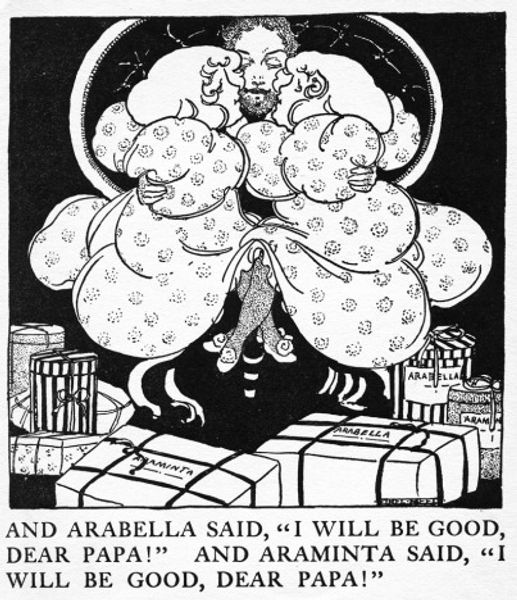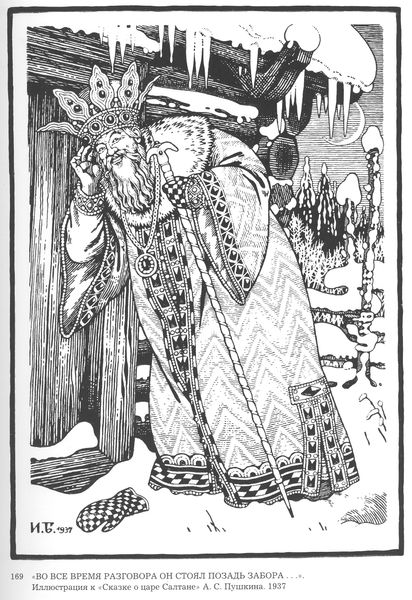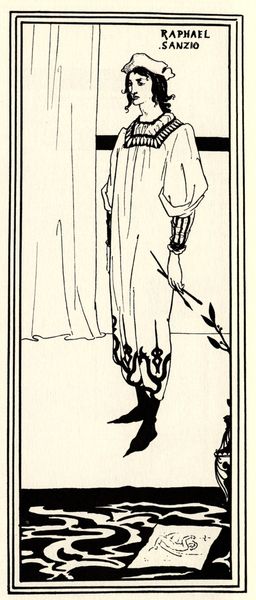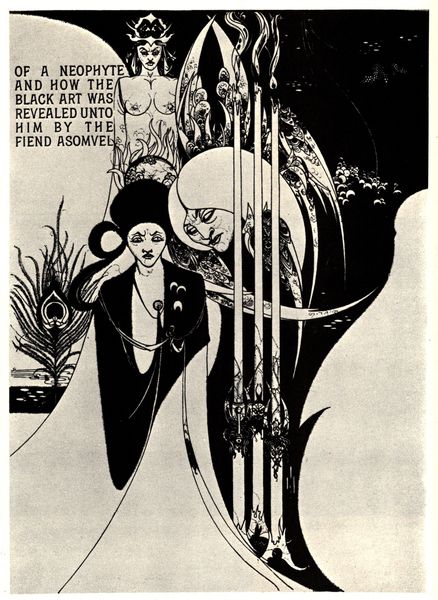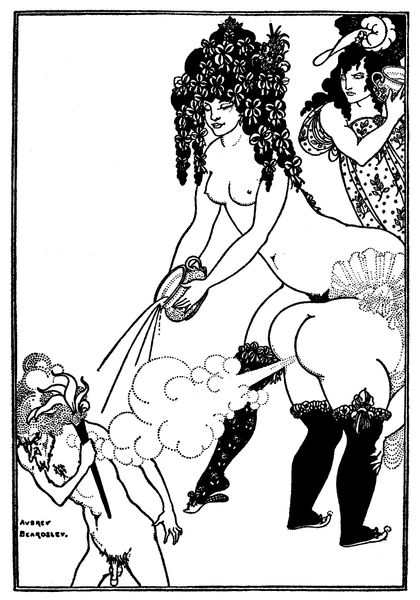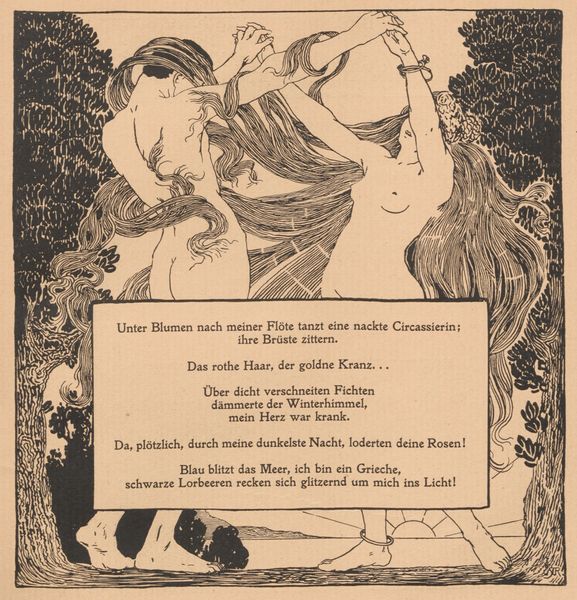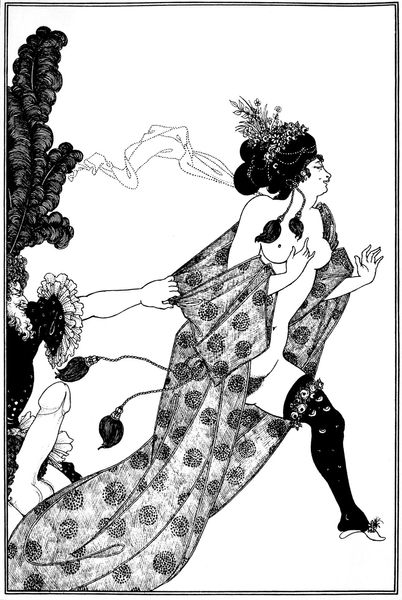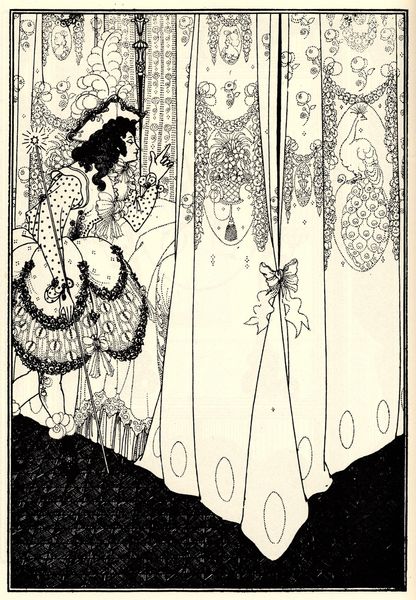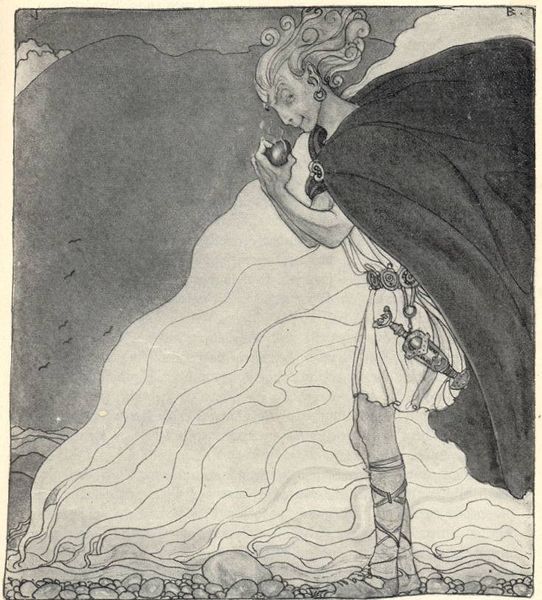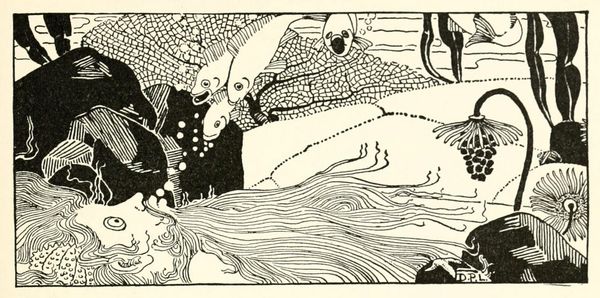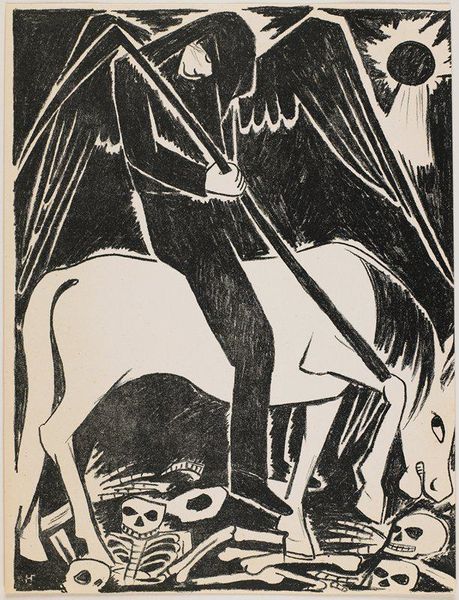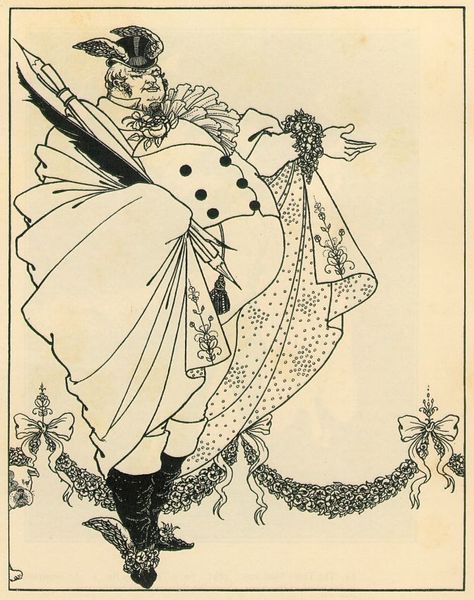
drawing, paper, ink
#
drawing
#
comic strip sketch
#
art-nouveau
#
narrative-art
#
comic strip
#
junji ito style
#
figuration
#
paper
#
ink line art
#
linework heavy
#
ink
#
manga style
#
comic style
#
comic art
#
organism
#
graphic novel art
#
doodle art
Copyright: Public domain
Curator: Ethel Reed’s illustration from Arabella and Araminta Stories, created in 1895, immediately strikes me as charming and slightly unsettling. The stark contrast between black and white gives it a very graphic quality, almost like a woodcut, yet there’s also a delicacy in the linework. What's your initial impression? Editor: The almost cartoonish faces and the explicit textual annotation certainly point toward mass-produced, and possibly gendered, media, reminding me of the rise of children’s consumer culture around the turn of the century. Are those the children's names at the bottom? It's interesting that the text mirrors the visual pairing, like it could be from an early advertising pamphlet or the like. Curator: Absolutely. It's a scene of childhood innocence and Christmas anticipation—or so it appears on the surface. Reed uses a simplified visual language to depict these figures. Notice the recurring motifs of bows in the girls' hair—and how that is countered by the harsh dark lines of the stockings! It creates a visual rhythm across the entire composition. Editor: Indeed. This stark composition almost evokes the 'divided self' through the juxtaposition of light and dark which gives me a creeping, Gothic feel. Who *are* Arabella and Araminta? It definitely feels pointed that Reed only provided illustrations and didn't actually pen the tale. It gives us much to wonder, thinking about who these young girls are as individuals in a cultural landscape where they seem little more than placeholders in what feels like, at the end of the day, a transaction of material commodities. Curator: A clever and slightly haunting interpretation! Reed's illustration embodies some elements of the aesthetic movement with that tension between surface beauty and symbolic depth. The flowing lines of the girls' dresses create a sense of elegance, a beauty belied, in your view, by the nature of consumerism you highlighted. Editor: Well, the work provides that fertile ground. Considering its context and formal qualities allows one to come to their own understanding of the image's significance—what do you take from the stark choice of inks? Curator: The decision to forego color amplifies the power of line and form. It lends the illustration a timeless quality. Editor: Indeed, the more we analyze Reed's choices, the more the artwork comes to life. Thank you.
Comments
No comments
Be the first to comment and join the conversation on the ultimate creative platform.
